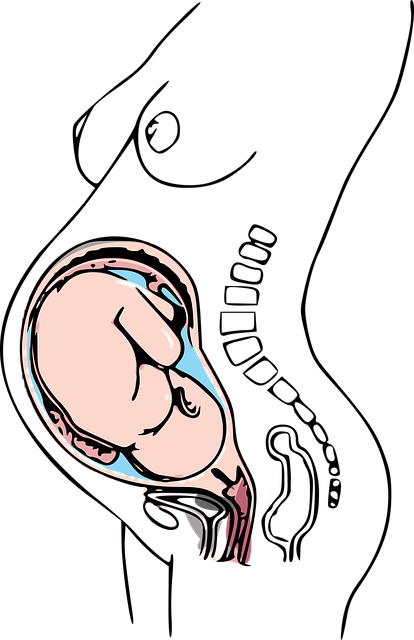Acidity is one of the most common ailments that almost every one of us might have experienced once in our lifetimes. A searing, sometimes sour-tasting chest-spasm that many people might have experienced at some point in their lives. We know that humans have been battling heartburn for hundreds, if not thousands of years.
But recently the incidence has risen, making it a common stomach complaint worldwide.
We often hear people say, “I have acidity problems.” But have you ever wondered what they mean by it? What happens when someone says they are suffering from acidity?
How is acidity caused? What can you do to relieve the symptoms caused by acidity? To answer all these questions, you must understand what is acidity?
MECHANISM
PHYSIOLOGY
The oesophagus is a tube that connects the mouth to the stomach. It is made of muscles that work to push food toward the stomach in rhythmic waves aka peristaltic movement. Just between your oesophagus and stomach is where you’ll find one of the most important muscles you probably didn’t know you had the lower oesophageal sphincter, or LES.

Once food reaches the stomach, food is prevented from refluxing (moving back into the oesophagus), by a special area of circular muscle located at the junction of the oesophagus and stomach, called the lower oesophageal sphincter (LES). A pressure difference across the diaphragm (the flat muscle) that separates the chest from the abdomen, also tends to keep stomach contents in the stomach.
Stomach has numerous glands present in its wall which secrete a juice called the gastric juice. It mainly consists of three major components
HYDROCHLORIC ACID
- It kills all the harmful bacteria and other microbes that have entered the system through the food
- Creates an acidic condition in the stomach because pepsin works best at an optimum pH 2
MUCUS
- If there is a layer of acid secreted by the stomach won’t the inner lining or the cells get damaged. The protection of the inner lining of the stomach is assured by the mucus layer. The mucus oversees protection of the stomach walls from the harmful activity of the hydrochloric acid it makes sure that the cells remain undamaged
PEPSIN
- It takes up the responsibility of partially breaking down the proteins. The breakdown of proteins partially is not an easy job for the pepsin hence it requires acidic conditions created by hydrochloric acid to work efficiently.
So, it’s the stomach where the food gets churned thoroughly and is mixed with the gastric juice to digest it efficiently. This was all about the physiology. This is how it occurs normally
PATHOLOGY
Normally, the LES closes as soon as food passes through it. The muscle’s task is to stop it from surging back up again. The LES contracts, squeezing the stomach entrance and creating a high-pressure zone that prevents digestive acids from seeping out. But when the LES malfunctions, it becomes the main player in heartburn and acidity. If the LES doesn’t close all the way or if it opens too often or relaxes at the wrong moment or gradually weakens, it becomes like a faulty, ill-fitting lid, causing the area to depressurize then the acid produced by your stomach acid and even chunks of food can move up into your esophagus, sometimes going as far up as the mouth

There are special protective cells that line the stomach to prevent the acid from causing inflammation. But the esophagus does not have this same protection, and if stomach acid and digestive juices reflux back into the esophagus, they can cause inflammation and damage to its unprotected lining.
HIATAL HERNIA
The diaphragm is a muscle that separates your stomach from your chest. Normally there is a Hole or “hiatus” in the diaphragm through which the esophagus passes and connects to the stomach. If this hole or Hiatus enlarges, the upper part of the stomach can partially move through the abdomen into your chest which increases acid reflux.
CAUSES OF ACIDITY
The cause of all this internal drama has long been put down to diet. Certain foods and drinks can trigger heartburn in some people.
1. Eating certain foods, that lead to Excessive production of acid in your stomach

- spicy fatty foods
- chocolate
- garlic
- onions
- citrus fruits.
2. Poor or slow clearance of food from the stomach
- Eating large meals or lying down right after a meal
- Being overweight or obese
- Eating a heavy meal and lying on your back or bending over at the waist
- Snacking close to bedtime
3. Obesity
4. Caffeine and peppermint – contain ingredients that may have a relaxing effect on the LES, which makes it incapable of doing its job.
5. Carbonated beverages – can similarly bubble up in the stomach, forcing to open the valve.
6. Heavy coughing, constipation or intense physical exertion – Excess pressure on the abdomen or muscle strain
7. Smoking – Nicotine in cigarettes relaxes the LES.
8. Consuming excessive amounts of alcohol

9. Pregnant women often experience more heartburn due to the pressure of a growing baby on their stomachs and the levels of certain hormones in their bodies.
10. Hypothyroidism
11. Diabetes
12. Excessive levels of stress
13. Medications – asthma, High blood pressure, birth control, depression, Pain can also have unintended effects on the LES.
SYMPTOMS OF ACIDITY
KEY SYMPTOMS

- Heartburn – One of the most common symptoms of Acid reflux disease. A burning pain or discomfort that moves from your stomach to your abdomen or chest, or even up into your throat.
- Frequent regurgitations of food or liquids into the mouth which leaves a very sour taste on the tongue.
- Difficulty in swallowing food and a feeling of lump in your throat – If you are having acid reflux for a long duration
- A constant dull pain in your stomach or chest
- Shortness of breath
CHRONIC SYMPTOMS
- Erosions in your stomach or esophagus which may bleed overtimes. This blood is passed in your stools which appear blackish. Blood in vomiting can also indicate bleeding in your esophagus or stomach which usually presents as fresh blood.
OTHER SYMPTOMS
- Hiccups that don’t let up
- Nausea
- Weight loss for no known reason
- Wheezing
- Dry cough
- Hoarseness
- Chronic sore throat.
ACIDITY VS HEARTBURN VS GERD
Acid reflux (ACIDITY) is a digestive disease in which stomach acid or bile irritates the food pipe lining. This is a chronic disease that occurs when stomach acid or bile flows into the food pipe and irritates the lining.
Acid reflux causes heartburn and other signs and symptoms.
Frequent or constant acid reflux and heartburn leads to GERD
CONCLUSION
An occasional bout of heartburn isn’t necessarily something to worry about. But, if heartburn starts happening regularly, it can weaken the LES muscle over time. Letting more and more acid escape. And if it goes untreated, this can cause bigger problems. Over time, constant acid leakage from heartburn may form scar tissue which narrows the esophageal tube, making it harder to swallow food. Ongoing reflux can also damage the cells lining the esophagus–a rare condition called Barrett’s esophagus, which can elevate the risk of esophageal cancer.
Luckily, heartburn is often treatable with a range of medicines that can help neutralize or reduce stomach acid or changes in lifestyle.

Now there are lots of Lifestyle changes too that you can do, that will help you to avoid reduce acid reflux. For complete information check this article Acidity – Diet and lifestyle changes
If you want to know about how to cure acidity or heartburn instantly at home without any medicines then do check this link 10 Home remedies to cure acidity
For more such article check out the website medicoved.com
Author : Dr. Easminara Shaikh



Pingback: Acidity - Diet and lifestyle changes - Medicoved
Pingback: 10 Home remedies to cure acidity - Medicoved